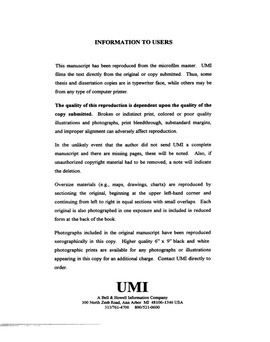| dc.contributor.advisor | Roegiers, Jean-Claude, | en_US |
| dc.contributor.author | Dagger, Marisela Amanda Sanchez. | en_US |
| dc.date.accessioned | 2013-08-16T12:29:52Z | |
| dc.date.available | 2013-08-16T12:29:52Z | |
| dc.date.issued | 1997 | en_US |
| dc.identifier.uri | https://hdl.handle.net/11244/5549 | |
| dc.description.abstract | In the application of most of the reservoir rock models to real engineering problems, the role of reservoir rock is frequently limited to its storage and delivery capabilities; the interaction of fluid flow with rock deformation has been ignored. However, coupling of fluid flow and rock or soil matrix deformation has recently become of interest in many problems in petroleum, civil, environmental, geological and mining engineering. In the oil industry, problems such as ground subsidence, reservoir compaction, borehole stability, sanding and hydraulic fracturing need to be addressed with a coupled approach to make more accurate predictions than when each process is considered independently. | en_US |
| dc.description.abstract | Examples of coupled fluid flow and rock deformation for a simple one-dimensional scenario, as well as for more complex cases such as a layered oil reservoir compaction are presented. The code is able to successfully handle nonlinearities in fluid flow properties and a work-softening constitutive equation for the solid matrix. The mutual relationship among variables such as saturation, pore pressure and displacements is shown. It is also demonstrated that coupling is an important issue to be considered in compaction problems. Actually, the commonly used staggered procedure of transferring information from a fluid flow code to a stress-strain module can never reproduce the essential physics involved in reservoir compaction. | en_US |
| dc.description.abstract | Coupling the mechanical response with fluid flow is done through monitoring changes in pore pressure. The mechanical part considers undrained pore pressure and saturation changes occurring due to volumetric strain in the solid. Once mechanical equilibrium is reached fluid flow is allowed for a real time step putting the system out of equilibrium and a new set of mechanical steps is required. | en_US |
| dc.description.abstract | Here a two-dimensional explicit Lagrangian finite-difference code, fully-coupled with a two-fluid flow system in porous media, is developed. The solid deformation is considered using the dynamic relaxation procedure which allows the model to go into post-peak behavior of the material without creating instability. This method is particularly powerful when deformation is by nonlinear/failure systems (i.e., work softening plasticity). | en_US |
| dc.description.abstract | The code consists of two parts: one mechanical and one fluid flow. The mechanical calculations essentially solve motion equations with a damping factor by using several pseudo time steps until equilibrium is reached. Strains are determined from displacements and the corresponding stress field calculated through a constitutive equation. | en_US |
| dc.format.extent | xxi, 195 leaves : | en_US |
| dc.subject | Oil reservoir engineering Mathematical models. | en_US |
| dc.subject | Two-phase flow Mathematical models. | en_US |
| dc.subject | Engineering, Petroleum. | en_US |
| dc.subject | Geotechnology. | en_US |
| dc.subject | Rock deformation Mathematical models. | en_US |
| dc.title | A fully-coupled two-phase flow and rock deformation model for reservoir rock. | en_US |
| dc.type | Thesis | en_US |
| dc.thesis.degree | Ph.D. | en_US |
| dc.thesis.degreeDiscipline | Mewbourne School of Petroleum and Geological Engineering | en_US |
| dc.note | Adviser: Jean-Claude Roegiers. | en_US |
| dc.note | Source: Dissertation Abstracts International, Volume: 58-09, Section: B, page: 5092. | en_US |
| ou.identifier | (UMI)AAI9808407 | en_US |
| ou.group | Mewbourne College of Earth and Energy::Mewbourne School of Petroleum and Geological Engineering | |
